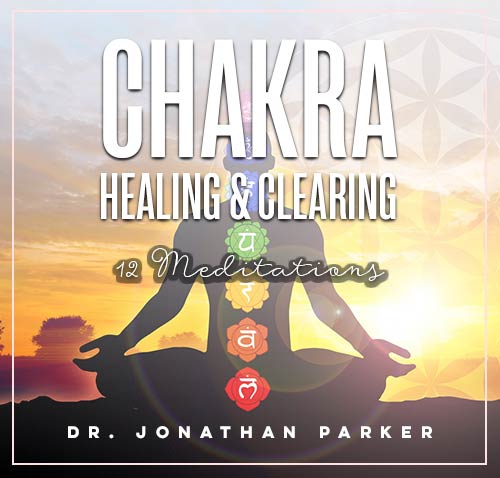Understanding Chakras: A Guide to Energy Centers

Looking for more amazing products? Check out our online store and explore our collection here! Happy shopping!
Before diving in, please note: This post is for informational purposes only. If you’d like to know more about how we approach topics, feel free to check out our friendly Disclaimer Page.
Hey there, amazing readers! 
We’re committed to delivering quality posts, and your support (even just sticking around despite the ads) means everything to us. So, bear with us, and thanks for helping us keep the good vibes rolling. Now, on to the fun stuff!
TRANSLATE BUTTON AT THE END OF THE ARTICLE
A Quick Overview
Chakras are fascinating and dynamic energy centers within our bodies, playing a pivotal role in our physical, emotional, and spiritual well-being.
Have you ever felt a rush of joy, a surge of creativity, or a deep sense of connection to the universe?
Those experiences could very well be linked to your chakras.
In this guide, we’ll dive into the essence of chakras, their historical significance, and how they influence our lives.
By the time you finish reading, you’ll have a well-rounded understanding of these vital energy centers and how they can impact your overall health and happiness.
So, let’s roll up our sleeves and get started on this enlightening journey!
What Are Chakras? An Introduction to Energy Centers
Chakras are energy hubs situated along the spine, each corresponding to specific physical and emotional aspects of our being.
Imagine your body as a complex electrical circuit, with chakras serving as the key nodes that distribute energy.
There are seven primary chakras, each playing a unique role.
They are:
Root Chakra (Muladhara)
Sacral Chakra (Svadhisthana)
Solar Plexus Chakra (Manipura)
Heart Chakra (Anahata)
Throat Chakra (Vishuddha)
Third Eye Chakra (Ajna)
Crown Chakra (Sahasrara)
These energy centers work harmoniously to influence our emotional state, levels of creativity, and even our physical health.
When balanced, they allow energy to flow freely, promoting well-being and vitality.
You might wonder why chakras are so important.
Well, when these centers are aligned and functioning properly, they can lead to a deeper sense of connection to oneself and the surrounding world.
However, if a chakra is blocked or out of balance, it can manifest in various physical and emotional ailments.
The beauty of understanding chakras is that it empowers us to take charge of our health and happiness.
The Historical Roots of Chakra Philosophy Explained
Chakras originate from ancient Indian spiritual texts known as the Vedas, dating back over 5,000 years.
They were first mentioned in the "Yoga Sutras" by Patanjali, who emphasized their significance in the practice of yoga and meditation.
The concept of chakras is deeply intertwined with the philosophy of Kundalini yoga, which focuses on awakening the dormant energy at the base of the spine.
Throughout history, various cultures have embraced the idea of energy centers, though they might use different terminology.
Many Eastern traditions, including Ayurveda and Buddhism, recognize the importance of balancing these energies for holistic health.
In the West, interest in chakras surged in the 20th century as people began exploring alternative healing methods.
Today, many incorporate chakra work into practices like yoga, meditation, and holistic healing to promote wellness and self-awareness.
Understanding the historical context of chakras enriches our appreciation for their significance in modern wellness practices.
These ancient concepts have evolved, yet they continue to resonate with people seeking balance and harmony.
Exploring the Seven Major Chakras and Their Functions
Let’s take a closer look at the seven major chakras and what each one represents:
Root Chakra (Muladhara):
Located at the base of the spine, it’s all about grounding and stability.
Think of it as your life’s foundation.
When strong, you feel secure and safe.
Sacral Chakra (Svadhisthana):
Situated in the lower abdomen, it governs creativity and emotional expression.
A balanced sacral chakra fosters joy and healthy relationships.
Solar Plexus Chakra (Manipura):
Found in the upper abdomen, it’s your power center.
It influences self-esteem, confidence, and personal power.
When it’s vibrant, you feel unstoppable!
Heart Chakra (Anahata):
Located at the center of your chest, it’s the seat of love and compassion.
A balanced heart chakra enhances your capacity for empathy and connection.
Throat Chakra (Vishuddha):
Positioned in your throat, this chakra governs communication and self-expression.
When open, it allows for clear and authentic communication.
Third Eye Chakra (Ajna):
Situated between the eyebrows, it’s linked to intuition and insight.
A balanced third eye chakra enhances your perceptive abilities and clarity.
Crown Chakra (Sahasrara):
At the top of the head, it connects you to spiritual awareness.
When this chakra is open, you feel a sense of oneness with the universe.
Understanding these chakras gives us a roadmap for personal growth.
Each energy center reflects different aspects of our lives, and balancing them can lead to a more fulfilling existence.
How Chakras Influence Your Physical and Emotional Health
Chakras are like the control panel of our well-being, influencing everything from physical health to emotional states.
When they function optimally, they radiate positive energy throughout our bodies.
Here’s how they affect us:
Physical Health: Blocked chakras can lead to ailments in corresponding body parts.
For example, a blocked throat chakra may result in issues like sore throats or communication problems.
Emotional State: Each chakra is linked to specific emotions.
For instance, an imbalanced heart chakra can lead to feelings of isolation or unworthiness.
Mental Clarity: An open third eye chakra promotes focus and clarity, while a blocked one can cause confusion and indecisiveness.
Spiritual Growth: A balanced crown chakra can facilitate spiritual awakening and connection, making you feel part of something larger.
Being aware of how chakras influence our health can help us identify imbalances and take proactive steps to restore harmony.
Simple practices like meditation, yoga, or energy healing can work wonders.
Signs That Your Chakras Might Be Out of Balance
Have you ever felt off balance?
It could be your chakras crying out for attention.
Here are some signs that your energy centers might be misaligned:
Emotional Distress: Frequent mood swings, anxiety, or depression can indicate an imbalance.
Physical Ailments: Persistent pain or discomfort in specific areas might suggest a corresponding chakra blockage.
Creativity Issues: If you’re feeling uninspired, your sacral chakra might need some love.
Communication Problems: Difficulty expressing yourself?
Your throat chakra may be blocked.
Low Energy Levels: Feeling fatigued or depleted can hint at disruptions in your energy flow.
Difficulty in Relationships: Struggles with love or connection can signal a heart chakra imbalance.
Lack of Purpose: If you’re unsure of yourself or lack direction, it might be your solar plexus chakra seeking attention.
Recognizing these signs is the first step toward healing.
You can explore various practices to restore balance and enhance your overall well-being.
A Deep Dive into the Root Chakra: Foundation of Stability
The root chakra, or Muladhara, is foundational for our sense of safety and security.
It’s like the sturdy base of a tree, anchoring us to the earth.
Here’s what you need to know:
Location: Base of the spine, in the tailbone area.
Color: Red, symbolizing energy and vitality.
Element: Earth, representing grounding and stability.
When the root chakra is balanced, you feel secure, grounded, and connected to your body.
You’re more likely to trust yourself and others, fostering a sense of stability in your life.
On the flip side, an unbalanced root chakra may lead to feelings of fear, anxiety, and disconnection from reality.
Physical symptoms can include issues with the legs, feet, or lower back.
To nurture your root chakra, try grounding exercises like walking barefoot on grass or meditating while visualizing a red light at the base of your spine.
Practicing yoga poses like Mountain Pose or Warrior I can also enhance this energy center.
The Sacral Chakra: Creativity and Emotional Flow Unleashed
The sacral chakra, or Svadhisthana, is the source of our creativity and emotional expression.
It’s where we find joy and pleasure in life.
Here’s a deeper look:
Location: Lower abdomen, about two inches below the navel.
Color: Orange, symbolizing creativity and joy.
Element: Water, representing fluidity and adaptability.
When the sacral chakra is balanced, you feel a sense of passion and creativity flowing through your life.
You’re open to new experiences and comfortable expressing your emotions.
However, an imbalanced sacral chakra can lead to emotional instability, creativity blocks, and issues with relationships.
You might find it hard to connect with your feelings or express joy.
To activate your sacral chakra, indulge in creative activities like painting, dancing, or cooking.
Engaging in water activities, like swimming or soaking in a bath, can also help balance this energy center.
The Solar Plexus Chakra: Power and Confidence Unlocked
The solar plexus chakra, or Manipura, is your personal power center.
It’s where self-esteem and confidence reside.
Let’s explore what makes it thrive:
Location: Upper abdomen, around the stomach area.
Color: Yellow, symbolizing energy and vitality.
Element: Fire, representing transformation and power.
A balanced solar plexus chakra empowers you to take charge of your life.
You feel confident, driven, and capable of achieving your goals.
However, if this chakra is blocked, you might struggle with self-doubt, indecision, or even a lack of motivation.
Physical symptoms can manifest as digestive issues or adrenal problems.
To strengthen your solar plexus chakra, practice assertive communication and set personal boundaries.
Engage in activities that boost your confidence, like public speaking or taking on leadership roles.
The Heart Chakra: Love and Compassion in Harmony
The heart chakra, or Anahata, is the bridge between the lower and upper chakras.
It’s all about love, compassion, and connection.
Here’s what you should know:
Location: Center of the chest, near the heart.
Color: Green, symbolizing healing and love.
Element: Air, representing openness and connection.
When your heart chakra is balanced, you radiate love and compassion.
You feel deeply connected to yourself and others, fostering healthy relationships.
On the contrary, a blocked heart chakra can lead to feelings of isolation, resentment, or fear of intimacy.
You might find it hard to forgive or connect with others.
To open your heart chakra, practice loving-kindness meditation, engage in acts of kindness, and surround yourself with loving relationships.
Yoga poses like Cobra Pose or Bridge Pose can also help energize this center.
The Throat Chakra: Express Yourself with Clarity
The throat chakra, or Vishuddha, is the center of communication and self-expression.
It’s where our thoughts and ideas get voiced.
Here’s a closer look:
Location: Throat area.
Color: Light blue, symbolizing clarity and truth.
Element: Ether, representing sound and communication.
A balanced throat chakra enables clear communication and authentic self-expression.
You feel confident in sharing your thoughts and emotions.
However, if this chakra is blocked, you may struggle with articulating your feelings or expressing your truth.
Physical symptoms might include sore throats or jaw tension.
To enhance your throat chakra, practice speaking your truth, engaging in activities like singing or journaling.
Yoga poses that open the throat, such as Fish Pose, can also be beneficial.
The Third Eye Chakra: Intuition and Insight Awakened
The third eye chakra, or Ajna, is the seat of intuition and insight.
It allows us to see beyond the physical world.
Here’s what to know:
Location: Between the eyebrows, slightly above the bridge of the nose.
Color: Indigo, symbolizing intuition and perception.
Element: Light, representing awareness and perception.
An open third eye chakra grants clarity, foresight, and a strong connection to your inner wisdom.
You’re in tune with your intuition and can see the bigger picture.
When blocked, you may experience confusion, lack of direction, or difficulty trusting your intuition.
Physical symptoms can manifest as headaches or vision problems.
To activate your third eye chakra, practice meditation focused on your inner vision.
Incorporating mindfulness into your daily routine can help enhance your intuition.
The Crown Chakra: Connection to Spiritual Awareness
The crown chakra, or Sahasrara, is the gateway to spiritual connection and enlightenment.
It connects us to the universe.
Here’s what to consider:
Location: Top of the head.
Color: Violet or white, symbolizing spirituality and transcendence.
Element: Thought, representing consciousness and understanding.
When your crown chakra is open, you feel a profound sense of unity with the universe.
You experience spiritual growth and awareness.
Conversely, a blocked crown chakra can lead to feelings of disconnection, confusion about your purpose, or spiritual stagnation.
Physical symptoms may include migraines or neurological issues.
To nurture your crown chakra, engage in meditation, prayer, or mindfulness practices.
Spending time in nature can also help you feel connected to something greater.
Conclusion
Understanding chakras is like peeking behind the curtain of our own energy systems.
By learning about these energy centers, we can take proactive steps to balance them, leading to improved physical health, emotional well-being, and spiritual growth.
Whether you seek grounding, creativity, confidence, love, or spiritual enlightenment, each chakra offers a unique pathway to discover your true self.
So, let’s embrace this knowledge and explore our chakras together.
The journey to balance and harmony is exciting, and remember, every small step counts!
Whether through yoga, meditation, or simply being mindful, we can nurture our energy centers and live our best lives.
Happy chakra journeying!

The Enlightenment Journey is a remarkable collection of writings authored by a distinguished group of experts in the fields of spirituality, new age, and esoteric knowledge.
This anthology features a diverse assembly of well-experienced authors who bring their profound insights and credible perspectives to the forefront.
Each contributor possesses a wealth of knowledge and wisdom, making them authorities in their respective domains.
Together, they offer readers a transformative journey into the realms of spiritual growth, self-discovery, and esoteric enlightenment.
The Enlightenment Journey is a testament to the collective expertise of these luminaries, providing readers with a rich tapestry of ideas and information to illuminate their spiritual path.
Our Diverse Expertise
While our primary focus is on spirituality and esotericism, we are equally passionate about exploring a wide range of other topics and niches 

To ensure we provide the most accurate and valuable insights, we collaborate with trusted experts in their respective domains 
Our blog originally focused on spirituality and metaphysics, but we’ve since expanded to cover a wide range of niches. Don’t worry—we continue to publish a lot of articles on spirituality! Frequently visit our blog to explore our diverse content and stay tuned for more insightful reads.
Hey there, amazing reader! 
Check out our store here and take a peek at some of our featured products below! Thanks for being awesome!











